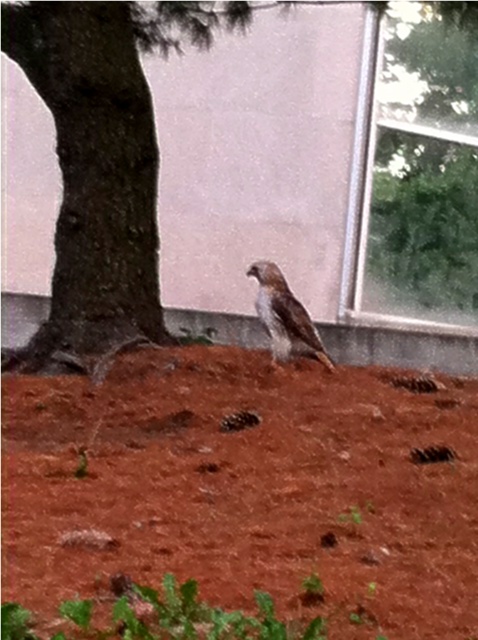
When last we met, the female Baltimore Oriole had just gone from eating the catkins which produce oak tree pollen to touching her beak to the female part of the oak thereby, I'm assuming, inadvertently pollinating the oak tree. Then ZIP she was gone. It appeared she flew into the nearby evergreen.
But when I get over there, it isn't the Mrs. it is the male Baltimore Oriole. Where did she go?
Where ever she zinged back in, and he flew straight up.
And then back round to the branch next to her.
She remains in what might possibly be a receptive posture for copulation. He does his little exuberant flight up... and then for whatever reason, they zipped off and I lost them in the trees. DRAT!
I go round to the front to see if they've come into the trees and there is a Catbird rapidly wallowing in the birdbath.
He stops and checks to see if I'm coming any closer.
By the way, the white dish under the bath is water for the rabbits and anyone else who needs a drink but isn't built to fly up to the bath.
She opens her eyes and checks me out. No I don't appear to be getting any closer.
She goes for one more splashy wallow...
And she's off!
I've not had resident Catbirds before but it turns out these guys just love taking baths. It appears they may be bathing twice a day.
Remember....ALWAYS keep an eye peeled for the good stuff!
Donegal Browne





























